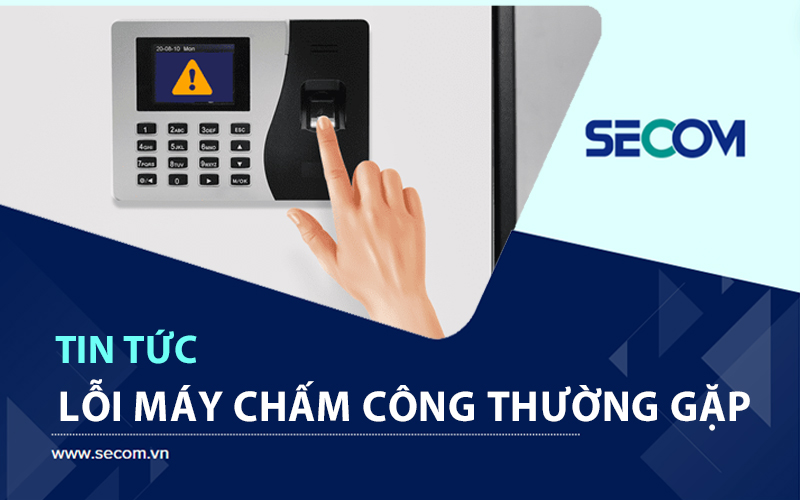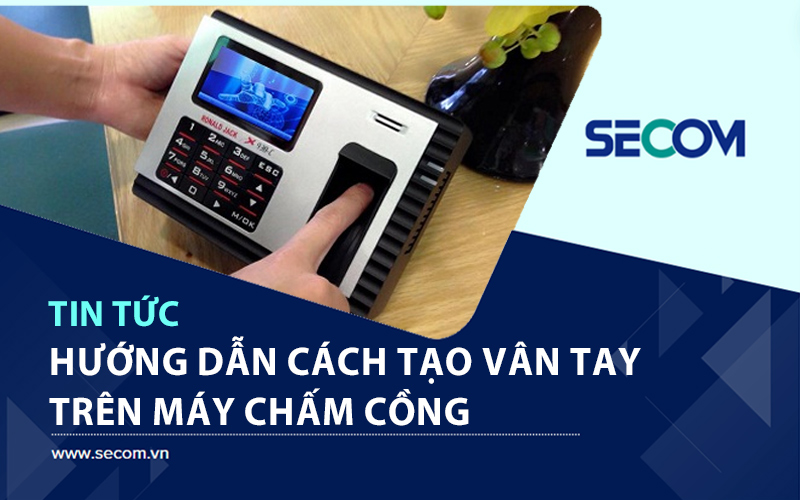- SECOM News
- Sep. 29, 2024
Which Office Surveillance Cameras are the Best and Most Secure Today?
In an era where office security is increasingly prioritized, installing a surveillance camera system has become an indispensable solution. These cameras not only help protect assets and prevent theft but also assist in employee management, thereby improving work efficiency. In the following article, SECOM will provide detailed information about the best office surveillance cameras and professional installation processes to help you make the most suitable decision.
What is an Office Surveillance Camera?
An office surveillance camera system consists of devices that record and transmit images and sounds from the office to a control center. This system can operate continuously 24/7, monitoring all activities in the office, helping detect and prevent security breaches, while also providing crucial evidence when needed.
Why Install an Office Surveillance Camera?
Installing an office surveillance camera system brings many significant benefits, enhancing operational efficiency and ensuring security for businesses. First, the camera system helps protect company assets by preventing and detecting theft and vandalism in a timely manner.
Second, cameras assist in better personnel management by monitoring employee behavior, ensuring discipline, and improving work performance. Third, in cases of disputes or conflicts, the camera provides verified evidence, enabling fair and transparent resolutions.
Lastly, the presence of surveillance cameras creates a safe work environment, allowing employees to feel secure and more focused on their work, thereby improving overall morale and productivity.
Advantages and Disadvantages of Installing a Surveillance Camera System
Installing a surveillance camera system for offices provides many great benefits for office protection and management. However, it also comes with some limitations. Careful consideration of both pros and cons will help you make an informed decision when choosing the right security solution for your office.
Advantages
- Enhanced security: 24/7 monitoring helps detect and prevent unauthorized access and theft in a timely manner.
- Efficient management: Monitor employee activities, evaluate work performance, and ensure workplace discipline.
- Provides evidence: Records images and sounds to offer concrete evidence in cases of disputes or conflicts.
- Increased safety: Creates a safe working environment, allowing employees to feel secure and focused on their tasks.
Disadvantages
- Investment cost: The cost of installing and maintaining a camera system can be relatively high, especially for complex setups.
- Privacy concerns: Installing cameras may raise concerns regarding employee privacy.
- Cybersecurity risks: Poorly secured cameras can be hacked, potentially exposing sensitive data.
- Maintenance and updates: Regular maintenance and software updates are necessary to ensure the system operates effectively.
What Does an Office Surveillance System Include?
An office surveillance system consists of several components, working together to provide a comprehensive and effective monitoring solution. Below are the key parts:
- Cameras: The most important part, responsible for recording images and sounds from the monitored area. Cameras can be wired or wireless and come in various designs with features such as resolution, viewing angle, pan-tilt-zoom capabilities, night vision, etc.
- DVR (Digital Video Recorder): The central component that receives, processes, and compresses signals from the camera before storing them on a hard drive. It also allows users to view live footage, review recordings, back up, and manage data.
- Hard drive: Where image and sound data recorded by the cameras are stored. The hard drive size should be selected based on the number of cameras, storage duration, and desired image quality.
- Monitor: Displays live camera footage or previously recorded footage. It could be a TV, computer, or smartphone, depending on user needs and system scale.
- Management software: Allows users to monitor and control the camera system remotely via computer or smartphone. Features include live viewing, playback, motion detection, alerts, etc.
- Cables and accessories: Include signal cables, power cables, connectors, and protective conduits used to connect system components and ensure stable operation.
Where Should Office Cameras Be Installed?
Choosing the right location for installing office cameras is crucial for optimizing monitoring efficiency and ensuring comprehensive security. Depending on the structure and specific needs of each office, you might consider installing cameras in the following strategic locations:
- Entrance: Installing a camera at the entrance is an effective way to control security and prevent unauthorized access. It helps record images of everyone entering or exiting the office and provides concrete evidence in case of incidents.
- Employee workstations: Cameras in open workspaces help monitor work behavior, ensure discipline, and improve productivity.
- Office corners: Positioning cameras in corners expands the field of view, ensuring no security blind spots.
- Outside the office: Surveillance of external areas like entryways, gardens, and fences helps monitor outside activities and detect suspicious behavior such as unauthorized access or vandalism.
Choosing Strategic Locations for Office Camera Installation
Selecting the right locations for installing office cameras is crucial to optimize surveillance effectiveness and ensure comprehensive security. Depending on the layout and specific needs of each office, you can consider installing cameras in the following strategic positions:
Entrance
Installing a camera at the entrance is an effective way to monitor security and prevent unauthorized access. A camera in this location helps capture the image of everyone entering and exiting the office, providing verified evidence in case of any incidents. Moreover, monitoring the entrance helps manage employee work hours and track the receipt and delivery of goods.
Employee Workstations
The employee workspace is often an open area where many activities take place. Installing a camera here helps manage and monitor employee behavior, ensuring workplace discipline and recording all work processes, use of company equipment, and interactions between employees and customers. This helps prevent violations of office policies and motivates employees to work more efficiently and professionally.
Office Corners
Placing a camera in the corner of the office expands the field of view, allowing for full observation of the workspace. This position helps eliminate security blind spots that other cameras may miss. A corner camera also monitors general activities like employee movement and communication, helping to detect potential issues and ensure overall office security.
Outside the Office
The external areas, including the entrance, garden, and fence, cover a large space. Installing a camera here helps monitor all activities outside the office, providing coverage of wide areas and timely detection of suspicious behavior, such as unauthorized access, theft, or damage to property. The camera also helps manage the entry and exit of employees, customers, and vehicles, ensuring security and order for the entire office premises.
Which Camera Type Should You Choose for Office Installation?
When installing an office surveillance system, selecting the right type of camera based on your needs and office conditions is essential. Below are two common types of cameras, each with its own advantages and applications, to help you choose the most suitable solution for your office:
Using Wifi Cameras with Two-Way Audio
Wifi cameras are a popular choice due to their convenience and ease of installation. With wireless connectivity, there’s no need for complicated wiring, which saves both time and cost. Additionally, the two-way audio feature allows direct communication with individuals in the monitored area, enhancing interaction and enabling quick response to situations. However, Wifi cameras can experience signal instability if there are obstacles or long distances between the camera and the router. Proper security measures should also be in place to prevent unauthorized access.
Using Wired Cameras
Wired cameras, often connected via Ethernet or coaxial cables, are a common choice for offices that require stable surveillance systems with high image quality. Wired cameras usually provide better resolution and more stable connections compared to Wifi cameras, as they are not affected by wireless signal interference. They are well-suited for offices with a fixed structure that does not require frequent changes. Moreover, wired cameras can operate continuously without concerns about losing connection or needing frequent battery changes.
Office Surveillance Camera Installation Process
A professional and efficient office surveillance camera installation process ensures customer satisfaction by following these key steps:
- Receive Request and Survey: The installation company receives the client’s request, dispatching a technical team to survey the office site. They assess the specific needs and conditions of the office to determine the best setup.
- Consultation and Quotation: Based on the survey, the installation company provides consultation on the appropriate types of cameras, the best placement for optimal coverage, and additional security solutions. A transparent and detailed quotation is also provided, outlining equipment costs, labor fees, and other services.
- Installation Execution: Once the client agrees to the proposal and quotation, the company proceeds with the installation process. The system is set up according to the agreed plan, ensuring progress is on track and the work meets quality standards.
- Supervision and Inspection: Throughout the installation, the technical team closely monitors each step, ensuring the execution aligns with the initial design and complies with technical standards.
- Configuration and Adjustment: After installation, technicians configure the system, calibrating the camera angles and settings to ensure optimal performance and system stability.
- Handover and Instruction: The installation company hands over the completed system to the client, offering instructions on how to operate and manage the cameras, including how to turn them on/off and use specific features. Additionally, they provide warranty and maintenance services to guarantee the system remains effective long-term.
SECOM – Trusted Office Surveillance Camera Installation Company
With extensive experience in the security industry, SECOM Vietnam offers comprehensive consulting, installation, and warranty services. SECOM ensures that surveillance systems operate efficiently and reliably by conducting thorough office assessments and proposing optimal camera placement solutions to cover critical areas while minimizing blind spots.
SECOM not only provides detailed guidance on operating the system but also offers tailored solutions such as cameras with integrated sensors and connections to other systems to meet the unique needs of each client. They also commit to supporting clients throughout the entire lifecycle of the camera system.
In summary, installing office surveillance cameras is a crucial measure to ensure security, improve management efficiency, and create a safe working environment. To achieve optimal results, it is essential to carefully choose the camera type, placement, and a reputable service provider. For a comprehensive and professional surveillance camera solution, contact SECOM for detailed consultation.

























